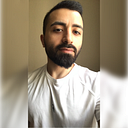My Journey to Becoming a Data Scientist: First Steps
Today, as I write this article, I find myself in the 5th month of my decision to become a data scientist. As a beginner, I have grasped my thoughts about this field, my learning process, and the steps I need to take in the future to some extent. I am writing this article with the aim of making my future self read and smile, and to help those who are just starting out.
How did it start?
The increasing popularity of artificial intelligence and the ability to use data in the learning process made me understand the importance of data. One day, while making plans for the future with my friends, I talked about how working with data, extracting meanings from it, and the fun of making sense of things could be a fascinating job. I mentioned that if we wanted, we could plan our careers in this field. This is how Huseyin Baytar, Burhan Yıldız and me started the journey.
The First Steps
I didn’t have any experience with data yet, but I remember saying, ‘How hard could it be?’ At first, what intrigued me was creating charts, but I didn’t know the path I should follow. I started by examining roadmaps like ‘Data Science Roadmap’ available on the internet. In the beginning, it all seemed very foreign — dozens of unknown terms, quite intimidating. However, I was ready to face possible challenges. I kept going, knowing that as long as you don’t stop, it doesn’t matter how slow you progress. I had to learn something related to this field every day, even if it was just a little.
Learning Process
Beginning my journey as a data scientist, I started by following the introductory courses I had mentioned to my friends. I would mimic the steps in the courses and later read articles about the things I had learned. In a relatively short period, around a month, I gained a superficial understanding of topics such as what data is and how it is organized, how to perform Exploratory Data Analysis (EDA), how to do feature engineering, how artificial intelligence learns, the types of algorithms that exist, and what machine learning models are and how they work.
However, the articles I read emphasized that this field is not just about these basics; in a professional setting, more is expected, such as understanding the business context and deriving insights from data. At that point, I began to consider joining a bootcamp. Still, I hadn’t fully grasped what to expect from a bootcamp. I continued to watch data science-related courses on Udemy, taking notes, and experimenting with data. One day, while following Vahit Keskin’s “Data Science and Machine Learning” course on Udemy, I began to understand more about the professional aspects of the field and what needed to be done. After some research, I found out that he had a Data Science Bootcamp program. After discussing it with my friends, we decided to apply and eventually got accepted into the bootcamp.
I was in the second month of my personal data science education, and there were two months left before the Bootcamp started. I was determined to make the most of this time and start the Bootcamp with a solid foundation. By now, when left alone with data, I had a vague idea of what I could do without mimicking what was taught in the course. In the first two months, I experimented with data on regression, classification, NLP, recommendation systems, time series forecasting, and image recognition (CNN). However, I realized that these were just the next steps in my data science career, and the real goal was to understand what insights could be derived from data.
After watching numerous data science courses and reading articles, I began to feel that the content was becoming repetitive. Actually, this was a good sign that I had grasped certain concepts. While going over what I had learned repeatedly, I extracted small pieces of information from each article or video. I was watching almost 20-hour courses just to learn 1–2 techniques. This reminded me that data science does not only include machine learning modeling and EDA; it was time to learn different things. My knowledge gained from Kaggle and experiments with data might not be sufficient. Therefore, I started to explore and learn the mathematical approaches needed for understanding the data.
I am still preparing notebooks on different datasets on Kaggle, and I am trying to participate in the monthly Playground Series contests organized by Kaggle, which are non-competitive contests. I enjoy cleaning data, building models, and looking at graphs to derive insights about the distribution of the data. Honestly, my notebooks are getting more beautiful as I learn new things. For those who are curious, I will also attach my Kaggle account at the end of the article.
Future Goals
After completing the bootcamp, I am planning to start a job in this field with the knowledge I have gained during this process. I still have some gaps, and I will probably learn them when I fail in interviews. I will continue my learning process continuously. In the upcoming period, I am considering completing courses about big data and diffrent type of artificial intelligence modelings on Coursera. After this first article, I plan to share knowledge that I have learned and think would be useful for everyone who is willing to be data scientist in the form of articles. Every five months, I am thinking of sharing recaps of what I have done and what I plan to do.
See you soon.
